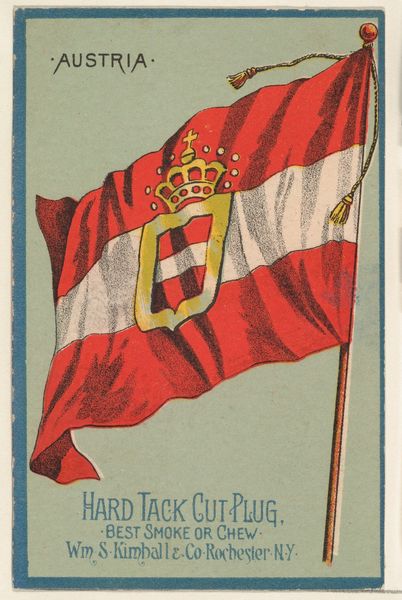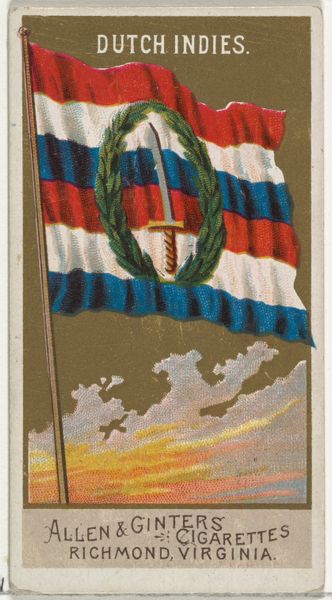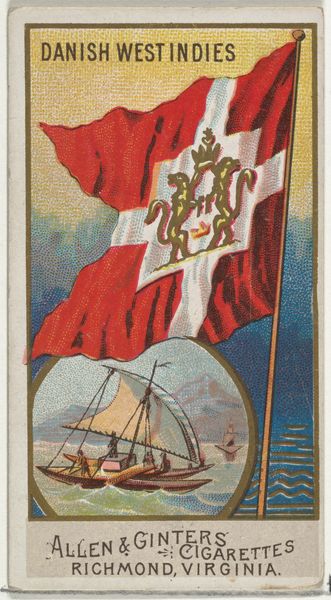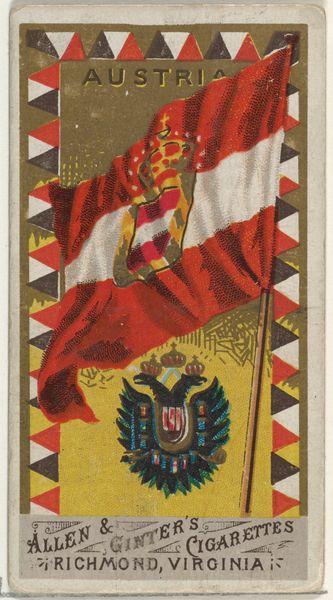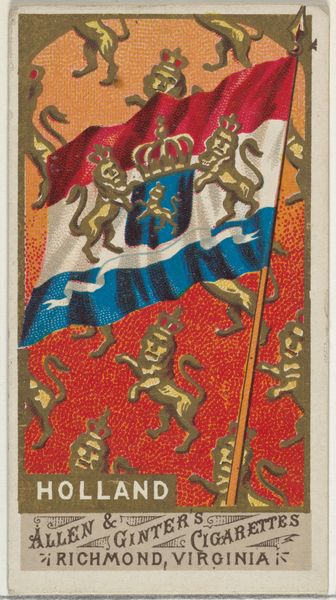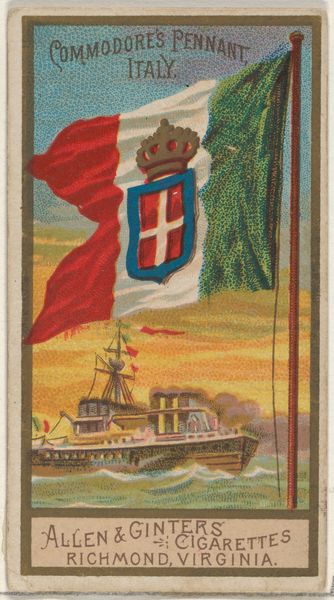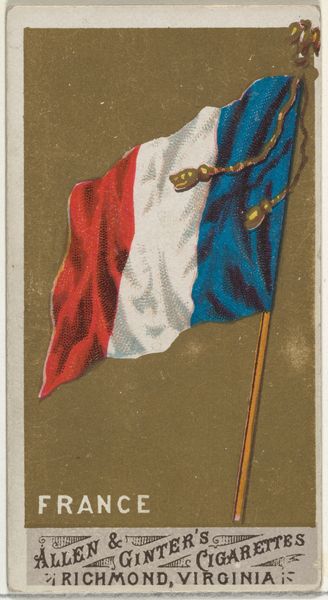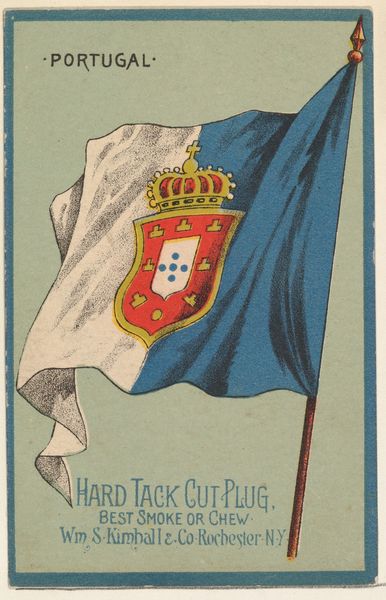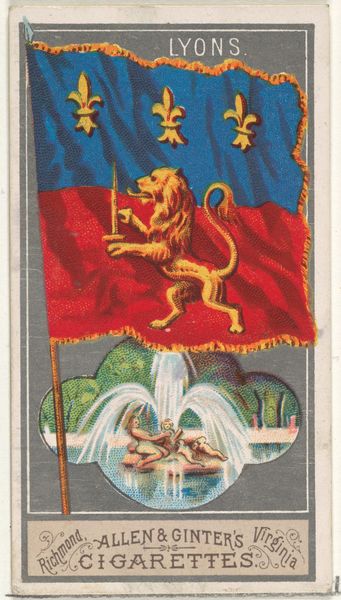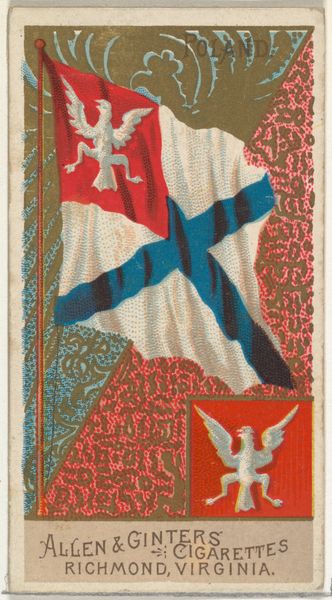
Holland, from the National Flags series (N195) issued by Wm. S. Kimball & Co. 1891
0:00
0:00
drawing, graphic-art, coloured-pencil, print
#
drawing
#
graphic-art
#
coloured-pencil
# print
#
coloured pencil
Dimensions: Sheet: 4 1/4 × 2 9/16 in. (10.8 × 6.5 cm)
Copyright: Public Domain
Curator: What immediately strikes me about this print is its crisp composition. The chromatic harmony, particularly the red, white, and blue, is ingeniously deployed within a formal symmetry, wouldn't you agree? Editor: Certainly catches the eye. But knowing this chromolithograph "Holland, from the National Flags series" was created by Wm. S. Kimball & Co. in 1891 as a promotional item for "Mechanic’s Long Cut" tobacco... Well, it re-frames the experience. Curator: You foreground the means of production, very well. It is part of a larger series and therefore adheres to a repetitive format—each design showcasing meticulous engraving with an inherent symbolic order—isn’t the layered heraldry fascinating? Editor: Absolutely. This image wasn’t about "high art;" it's about the everyday exchange. Cheap printmaking technologies disseminated national symbols through the circuits of consumer culture; the advertisement actually blends class and consumer aspiration, and of course the ubiquity of tobacco consumption during this period. Curator: Still, note the graphic interplay. The heraldic lions create dynamism against the horizontal flag. The golden filigree of the crown atop the shield further articulates a contained complexity within an otherwise simple, almost austere palette. It's far from a mere "advertisement;" it transcends that. Editor: Perhaps, but its very function deeply affects my perception. Mass production collapses that distance we tend to ascribe to art. The colored pencil used allowed for cheaper, quicker production and wide-scale distribution of these little slices of symbolic capital. These visual artifacts highlight social hierarchies and consumer desire; a desire inextricably intertwined with the history of labor practices in Rochester, New York. Curator: Fascinating! A compelling case on contextualization through materialism, illuminating societal and manufacturing impacts alongside its formal components, as a potent fusion for us both. Editor: Precisely, where formal design served and was also shaped by commercial and industrial forces, giving form and substance to cultural exchange during the time of its creation.
Comments
No comments
Be the first to comment and join the conversation on the ultimate creative platform.
